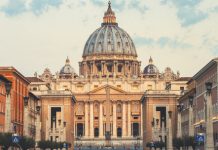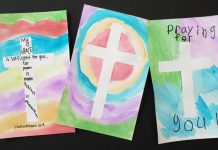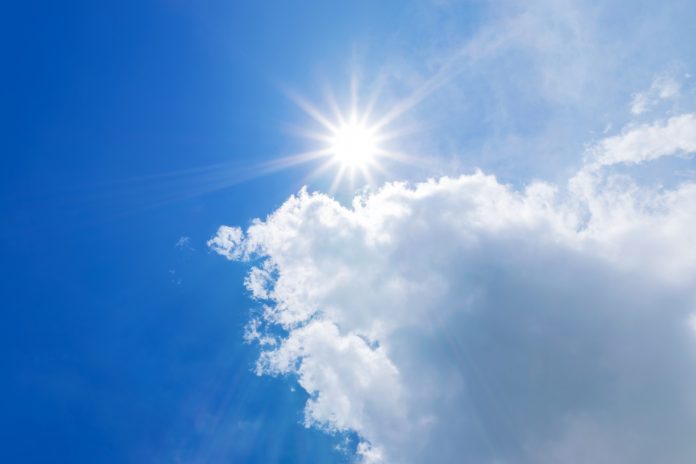
JEANNE HEIBERG
There is a joke that goes like this: “Light travels faster than sound. That’s why some people appear to be bright until you hear them speak.” This shows how much we interpret light in more than material forms. For example, the sun and the flame of candles have long been symbols of God. We consider intelligent people to be “bright.” To be “enlightened” means to expand in understanding. A light bulb over a cartoon head means the character has a “bright idea.”
The contrast of light and dark (between summer and winter or day and night, for example) helps us understand the human and spiritual experience of light and its meanings.
Light: A Symbol of the Creator
In the Northern Hemisphere, trees are usually bare by late autumn; nature dies, or sleeps. By early winter, daylight hours are short. Before electricity and central heating, people were aware of these long, dark days even more deeply than we are today. This is why the sun, source of all life, has long been a symbol of the Creator of All Life.
Ancient people didn’t get food from supermarkets. Rather, they observed how edible things grew and so turned to growing their own food. So the decline of the glorious summer sun meant a great deal to them.
As days grew shorter and darker, the reassuring glow of lamps, candles, hearth, and bonfires kept people warm and safe from wild animals and enemies. A source of light kept people from stumbling in the dark. Even so, people welcomed the rising sun and the bright star of dawn that told them it was coming.
Ways of using light became important during the winter season, and the presence of light and the symbols of light still touch us during the seasons of Advent and Christmas.
“Your Light Has Come”
During Advent, we remember the ancestry of Jesus with Jesse tree symbols, and we recall the time before his coming. He came to bring light into a dark world, something that could be understood by all people.
Into this dark world, hope was born through the Jewish nation; God intervened in its history. The people of the Jewish nation (and we) were given great promises and new understanding through prophets and priests. Hope was often given in terms of light. Isaiah wrote, “Arise Jerusalem, your light has come” (Isaiah 60:1). Isaiah spoke of a time to come, a time of light, peace, and prosperity for all nations.
Jesus, Our Day Star
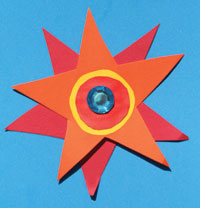 During the final week of Advent, there is a tradition of singing the great O Antiphons. The tradition began in monasteries during the Middle Ages and with priests singing the divine office, or Hours of the Church. An antiphon is a short song sung before and after each psalm, often a line from the psalm itself; an antiphon can also accompany readings.
During the final week of Advent, there is a tradition of singing the great O Antiphons. The tradition began in monasteries during the Middle Ages and with priests singing the divine office, or Hours of the Church. An antiphon is a short song sung before and after each psalm, often a line from the psalm itself; an antiphon can also accompany readings.
During the last week of Advent, these brief songs become more emotional and ecstatic. Filled with longing for Jesus to come, people cry out to Jesus under different names. One of these names is Oriens, a Greek word for “Rising Sun.” It honors Jesus, who came to be the rising of light, the dawn of a new day, a new beginning. Jesus announces a new beginning for humanity, a new opportunity to become who we were created to be in God’s image, to find our true selves, to know everlasting life.
From Oriens came two related names: “Day Star” and “Morning Star.” Both speak of Jesus as light, as source of hope and renewal. Jesus himself said “I am the light of the world” and promised his followers that they would never walk in darkness, that they would “have the light of life” (John 8:12). He called his followers the light of the world, and told them not to cover their light with a bushel, but to set it on a lamp stand so that others would “see your good works, and glorify your Father in heaven” (Matthew 5:14-16).
The titles Day Star and Morning Star become more specific in 2 Peter 1:19: “You will do well to be attentive to it (Jesus’ message), as to a lamp shining in a dark place, until day dawns and the morning star rises in your hearts.” In the final book of the Bible, Revelation, we read that the morning star will be given to those who keep to the teachings of Jesus (2:28). We hear Jesus name himself as “the root and offspring of David, the bright morning star” (22:16).” In Luke’s Gospel, we hear Zechariah prophesize about his infant son, John (the Baptist), and how the “daybreak from on high will visit us to shine on those who sit in darkness” (1:78-79).
The Problem of Darkness and Evil
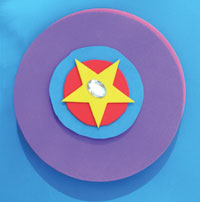 There was in ages past—and still is—a great deal of darkness and evil in the world. Somewhere in the past, human beings made choices that blocked out the Source of All Good and Light.
There was in ages past—and still is—a great deal of darkness and evil in the world. Somewhere in the past, human beings made choices that blocked out the Source of All Good and Light.
With God’s gift of free choice, people can choose to exclude God from their minds, hearts, and lives. They can listen to what some call Satan, what some call EGO (an acronym for Easing God Out). When they choose to close the door against the light of God, people experience darkness and evil in themselves and create evil and darkness for others. They are more likely to see the darkness and evil in others, and even project their own darkness onto others, rather than dealing with it in themselves.
Jesus came to save us from such blindness and terrible choices. He is called Day Star because he came into the darkness of a world that eases out God. He came to radiate God’s life and love into the darkness. He wants to radiate light into the world through those who accept him, who become day stars with him. Because the day star points to the coming dawn, it is a symbol of hope, and Jesus wants you to be a light of hope as well.
Saint Francis of Assisi is reported to have said that we all mourn for our essence that we know and now miss. Light is the cure! And Jesus is the Light. Jesus calls us to know and experience who we really are: children of God, children of Light.
Say to the Children
During Advent, we prepare to celebrate the coming of Jesus, the light of God. Using names like Rising Sun, Day Star, and Morning Star, the Church calls out to Jesus to come with light and hope.
In a world separated from God, who is the Source of Light and Life, there was darkness. People, made in the image of God to be light to the world, would often shut the door to the light that was meant to shine in them and through them to others.
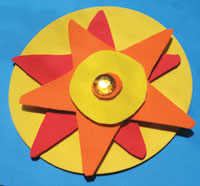 During Advent, we think about how it was before Jesus came when people in darkness longed for the morning and were happy to see the bright light of the morning star and the first streaks of dawn. The prophets gave people this message of hope in proclaiming the coming of the Messiah.
During Advent, we think about how it was before Jesus came when people in darkness longed for the morning and were happy to see the bright light of the morning star and the first streaks of dawn. The prophets gave people this message of hope in proclaiming the coming of the Messiah.
When he finally came, Jesus said, “I am the light of the world.” He could say this because he was one with his Father, God, Creator and Source of All Light. That’s why we call Jesus Day Star or Morning Star. That’s why we celebrate the coming of Jesus with many lights—Christmas tree lights, candles, and luminarias that light paths to homes and churches.
Jesus calls us to be lights of the world with him because in him, we also are one with the Father, the Creator and Source of All Light. We all have some spots of darkness inside us, inner shadows that keep God’s light from shining in and through us. Jesus shows us how to take away the barriers, to open the closed doors and windows that keep out God’s light.
As more and more of God’s light shines in us and through us, there is more and more light in the world. Darkness melts away before the glory of God’s light shining through God’s people. You may have seen, as I have, the light of goodness and love shining in some people, especially those who serve God and others with joy: hard-working priests, nuns, and brothers; religion teachers; parents who make sacrifices for their children; singers, artists, and poets who are committed to expressing God’s love and the goodness of life; and many others. Such people are day stars with Jesus, beacons of light to others, often in quiet ways that can be overlooked.
Look for the light in others. God gives it to everyone to light the way for themselves and others. It’s up to each person to let his or her light shine.
Jesus came to call each of us to be lights of the world with him. As you answer his call, you become a light bearer too. You have sparks of God’s light and life in you—we all do. You can choose to hide your light or you can choose to be bright and to let your light shine. You can choose to let your light be barely an ember, a dim 40-watt bulb, or you can choose to let it be a 100-watt bulb or a spotlight that lights up the sky for miles.
As you choose to let more of God’s light shine through you to others, your mind becomes enlightened, illuminated, so that you know more, make better choices, work with more energy and purpose, and have more to give others. Energy, light, and life interact with one another as you unite with Jesus, with God, with the Holy Spirit, and with your brothers and sisters in God’s loving family to shine away the darkness in the world.
Let’s make day star decorations for our Christmas trees (or our bulletin board, windows, doorways, or to make into mobiles) to celebrate Jesus and the light he shines into a dark world.
ACTIVITY: Day Star Crafts
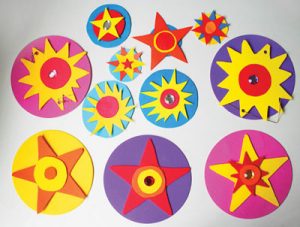 MATERIALS
MATERIALS
* day star base material (foam sheets and/or construction paper, origami paper, card stock) in bright colors
* scissors
* glue
* cord
* hole punch
* craft jewels, sequins
* pencils
* star and starburst patterns (CLICK HERE, copy in various sizes) and round items of various sizes (like cups or plates) for circle patterns
* Option: clear packaging tape (for laminating thin paper day stars)
PROCEDURE
1. Trace various sizes of stars, starbursts, and circles on the base material, in contrasting and blending colors.
2. Cut out designs.
3. Arrange stars, starbursts, and circles atop one another to build pleasing day star designs.
4. Punch a hole at the top of each for hanging (also at the bottom for arranging day stars in a line or mobile for hanging).
5. Embellish with craft jewels and/or sequins if you wish.
Option: You can easily laminate each day star by placing paper designs on lamination sheets (directions come in package) or on clear packaging tape, sticky side up. Cover with another laminating sheet or length of tape, sticky side down toward design. Trim excess, punch holes, and hang.
Day Star Blessing
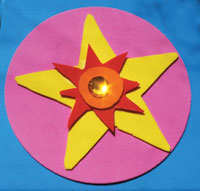 Place the students’ day stars on or around your prayer table, or have students hold them. You will need a bowl of holy water and a sprinkling sprig.
Place the students’ day stars on or around your prayer table, or have students hold them. You will need a bowl of holy water and a sprinkling sprig.
Prayer: Loving Lord Jesus, we praise and thank you for coming into a dark world to radiate God’s life and love to all who will receive you. We call you our Day Star, our light and hope for a better world, a better us.
Thank you for calling us to be day stars with you, to be who we truly are—children of God who shine with God’s light and love.
Bless these day star decorations (sprinkle day stars) we have made. May they remind us of you, who said “I am the light of the world.” May they help us hear your call to us to join you in bringing light to the world.
Help us to remove the shades that keep us and the world in darkness. Help us to remove the curtains of fear, anger, greed, selfishness, resentment, and lack of faith that shut out your light.
This Christmas and always, take away more and more of all the things that prevent your light from shining in and through us and in our world. Illuminate us by your presence as we share our gifts, talents, joy, and love with others.
All: Amen.
Jeanne Heiberg is the author of Advent Arts & Christmas Crafts (Paulist Press) and Advent calendars (Creative Communications). She has taught art, writing, creative catechetics, and meditation, and has directed parish catechetical programs. Jeanne writes, paints, and gives writing workshops in upstate New York.
This article was originally published in Catechist magazine, October 2010.
Image Credit: Shutter Stock 423334756, Jeanne Heiberg

